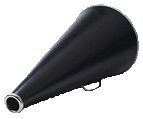
Press releases communicate announcements, special event information, spot news, features and reactions to events, and bad news. Unfortunately, the press release is one of the most overused tools in the PR business. That is why it is important to use it only when there is actual news to announce.
Prepare the release as a reporter would, and write it in the same form and style as the publication where it is going to appear. A press release is not a sales tool or a method to receive free advertising.

The best way to develop a relationship with the local paper is to read it daily. Find out names of the editors and reporters and study the style, tone and format of their writing. Talk to the education editor and ask him/ her about their preferred press release format, deadlines, and how to submit photos.
There is no specific format for press releases, but there is a loose guideline of information that is typically included before the actual text of the release.
Use the organization's letterhead or stationery for all media advisories and releases. While some releases require two pages, the most effective ones are typed and double-spaced on one side of the paper. Also include:
Place the contact name and telephone number at the top of the release. This is useful for the media in case they need more information.
Should be placed with the date near the top of the release on either the right or left side. If the information in the release can't be published immediately, wait to distribute it, or include an embargo date. Releases should not be sent too far in advance or they could get lost.
Include a dateline (in all caps) before the lead to the article, indicating what city the release is coming from (i.e. JACKSONVILLE, Fla.)
Standard rules of grammar, punctuation, and spelling always apply (make sure more than one set of eyes sees the release before distribution). Dictionaries and AP Style books are extremely helpful and necessary.